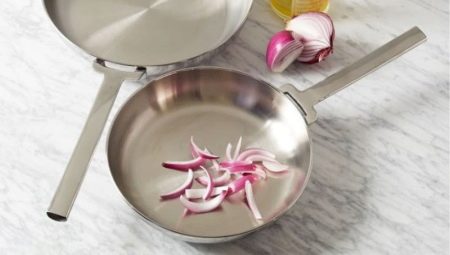For many years, a frying pan has been a constant subject in every kitchen. This kitchen appliance has a wide scope and is used not only for frying, but also for baking and stewing. Manufacturers produce a wide range of products in this group, which differ in size, material of manufacture, price range and functionality.
Often when buying a new pan, novice housewives are faced with the problem of choice. Professional chefs recommend paying attention to pans made of stainless steel.
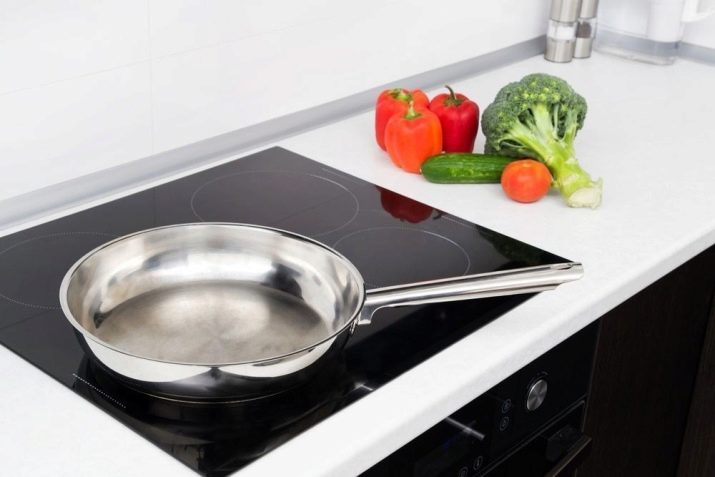
Features
A stainless steel pan is a cooking utensil that preserves the original taste and vitamin composition of the products as much as possible. Professional chefs recommend buying steel equipment with a non-stick coating, which will prevent the dishes from burning, and also prevent the appearance of colored stains on the surface. And also improve the cooking process thick bottom and walls.
When choosing a container with non-stick coating, it is necessary to pay attention to the thickness of the protective layer, which should not be less than 0.3 cm, and the number of layers applied. The optimal number of coatings is five layers, each of which has its own functional purpose.
In the manufacturing process of this type of goods, well-known brands use only high-quality steel with a minimum content of nickel and chromium.

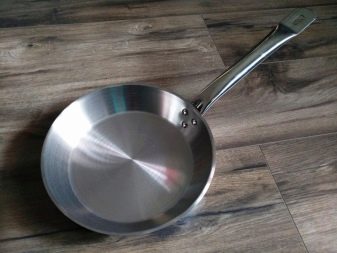
Advantages and disadvantages
Like any kitchen utensils, stainless steel pans have a number of positive and negative sides.
Advantages:
- resistance to corrosion and oxidative processes;
- ease;
- high esthetic indicators;
- universality;
- the ability to use even with mechanical damage;
- ease of operation and maintenance;
- high level of resistance to sharp temperature fluctuations;
- the permissibility of using blades and forks of different materials;
- durability;
- resistance to mechanical damage.

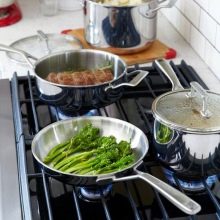
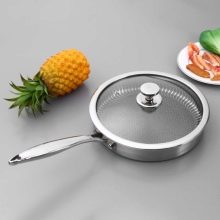
Disadvantages:
- burning of products with untimely stirring or frying over high heat;
- the difficulty of removing contaminants from the inside of the sides;
- the inability to use aggressive and abrasive detergents;
- low heat capacity;
- long heating period;
- the formation of fumes and smoke when using high temperatures;
- mandatory use of vegetable oil or animal fat;
- low thermal conductivity;
- difficulty in reaching a high temperature level;
- the inability to obtain a crisp;
- the appearance of multi-colored stains when heating an empty tank.
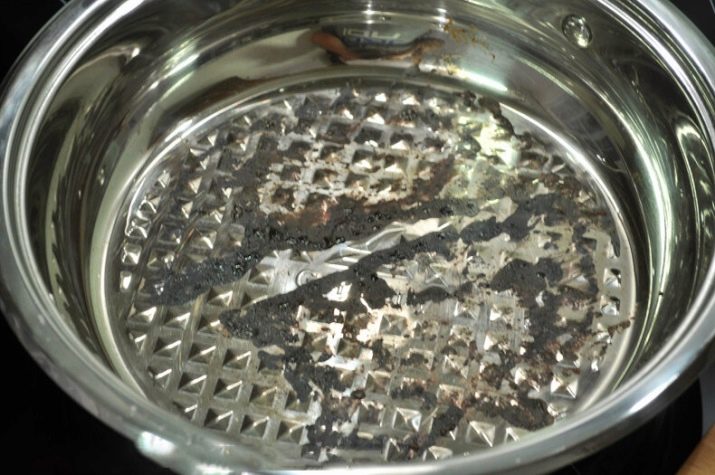
Kinds
On the shelves of shops you can see various types of pans. They differ in their characteristics depending on different criteria.
Type of source material
One of the main indicators that affects the price range of the product. The following types of steel can be used for the manufacture of kitchen utensils:
- nickel chromium - durable and the most expensive;
- steel 201 and 202 - the classic version of the materials;
- steel 430 - budget material.
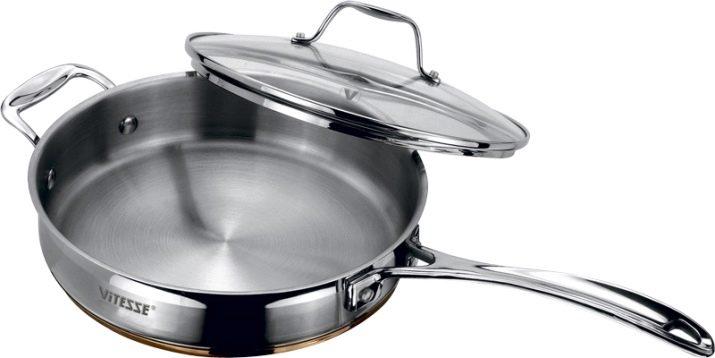
Surface type
Aesthetic indicator that affects only the appearance of the product. It is matte and glossy.
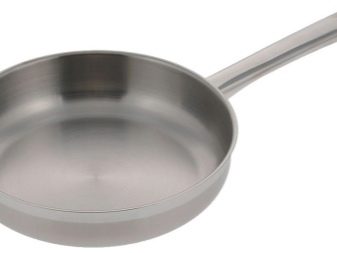
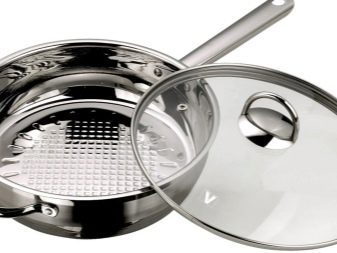
Bottom construction
An important indicator on which the uniform distribution of heat over the surface depends. The classic bottom design consists of three layers, but manufacturers can produce 5-layer models.
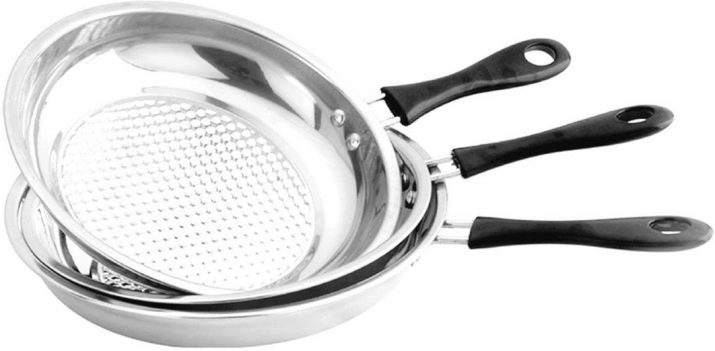
Type of inner surface
An indicator that affects the speed of cooking and the amount of oil used. Products come with a smooth or corrugated surface (grill).
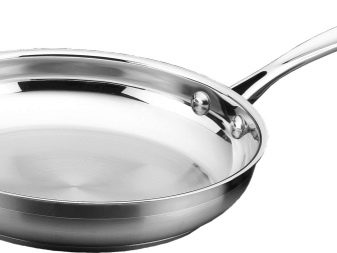
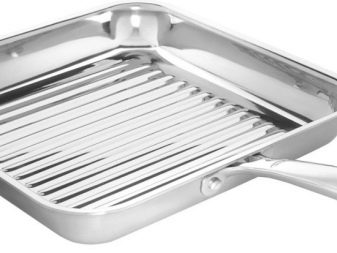
Pen type
A criterion that affects the safe operation of the pan. Manufacturers use the following types of pens for their products:
- cast;
- removable;
- folding;
- universal.
Handles can also be stainless, wood, thermoplastic and bimetal.
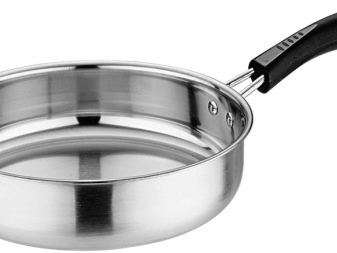
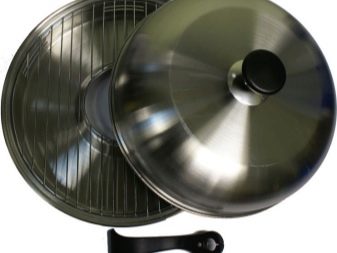
Cover type
An important indicator that affects the speed of cooking and maintaining the required temperature. The classic and most popular lid is a glass tight-fitting element with a steam vent and an iron edging.
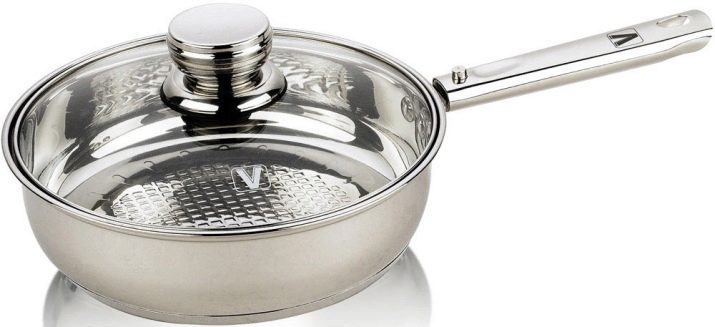
Functional purpose
Several types of products differ depending on their purpose.
- Universal - for frying fritters, cutlets, dressings in first courses, sauces, for stewing vegetable stews. Feature - beveled or straight walls, low height and the presence of a cover.
- Pancake - for making pancakes. Features - small height and diameter, inclined walls.
- Stewpan - for stewing vegetables, meat, fish. Features - high walls and large volume.
- Brazier - for baking. Features - thick bottom and walls.

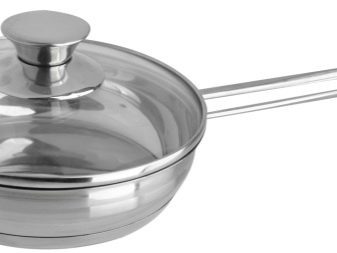
Modern equipment and innovative technologies allow manufacturers to produce not only stainless steel pans with thick bottoms or removable handles, but also completely new models.
- Wok - for quick frying of small pieces. Features - narrow bottom and high walls.
- Paella - for cooking over an open fire. Features - round shape and low walls.
- Grill - A modern kitchen utensil that can be used to cook steaks, fish, sausages, meat and vegetables on a gas stove without vegetable oil.
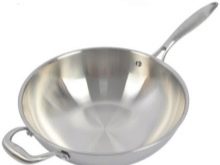
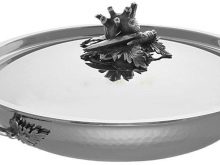
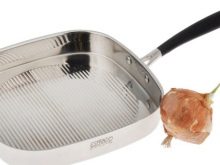
Professional chefs recommend choosing this product with refractory enamel, which will prevent burning products. Advantages:
- high palatability of cooked dishes;
- ease of preparation and the expenditure of a small amount of time;
- the need for a small amount of gas;
- the possibility of simultaneously preparing a large number of products;
- convenience and functionality;
- long period of operation.
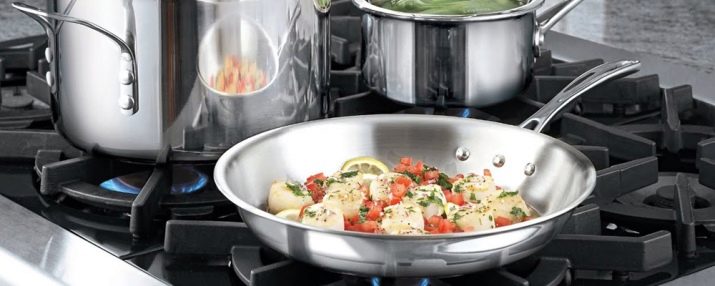
Dimensions
On the shelves of modern kitchenware and household appliances stores you can find pans of different sizes and diameters. In order to choose the right products of the right parameters, you need to know the following indicators:
- volume of dishes prepared;
- number of family members;
- burner diameter.
The size of the pan is directly affected by its type and function.
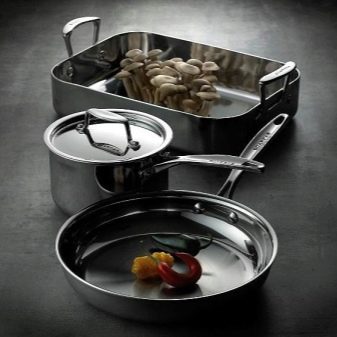
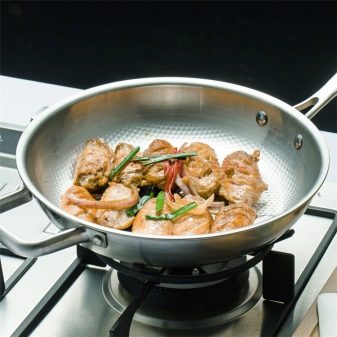
Manufacturers rating
Stainless steel pans are produced by many manufacturers from around the world. Consider which brands presented in stores are the best today.
- Luxstahl - A German brand whose products are in demand among professional restaurateurs. The main feature of the products of this manufacturer is a unique bottom structure, which consists of two steel layers, between which there is a third aluminum layer. And also the pan has a completely flat bottom surface, which simultaneously warms up over the entire area.
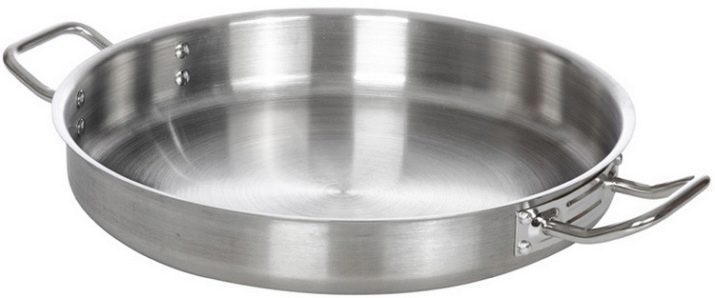
- Indokor - A Korean brand that produces modern kitchen utensils. Advantages - environmental safety, ease of maintenance, resistance to damage. Feature - a multilayer bottom surface, which consists of aluminum and copper layers. This design allows the heat to be evenly distributed over the entire surface and maintain the temperature of the food for a long time.
Pans can be used on induction hobs and dishwasher safe.
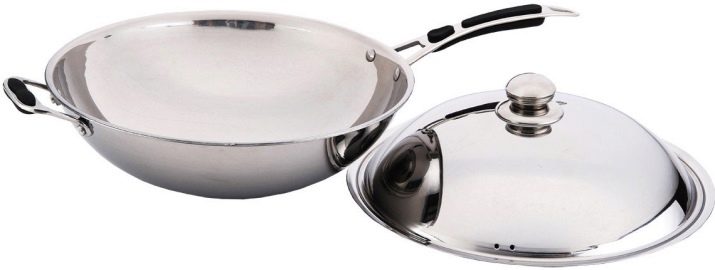
- Ballarini - A popular Italian brand whose products optimally combines price and quality.
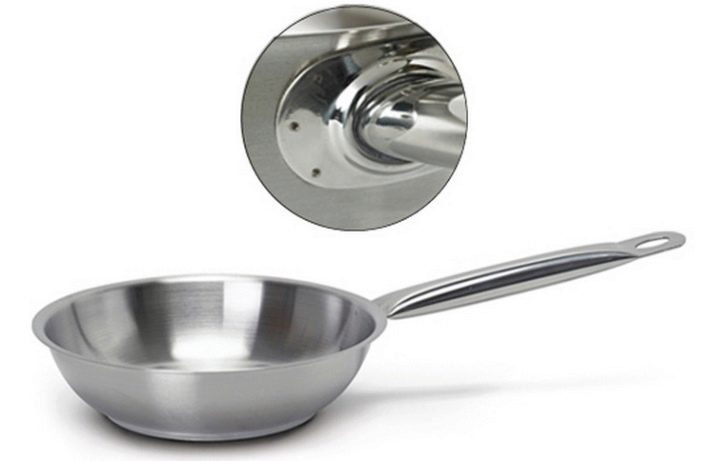
Very popular are Russian manufacturers who produce professional and high-quality cookware. One of the most famous domestic brands is Biostal, whose products are known not only in Russia, but also in European countries.

In stores you can also find products made in China and Asian countries, the purchase of which must be abandoned despite the attractive price range. These products are made from low quality raw materials in violation of production technology, which will negatively affect not only the period of operation of the products, but also their environmental safety.
How to choose?
A wide range of stainless steel kitchen utensils often makes it difficult to choose the right product.
Experts recommend that before going to the store carefully examine all the features of these pans, as well as pay attention to the most popular brands that have the most positive reviews and are engaged in the production of only quality products.
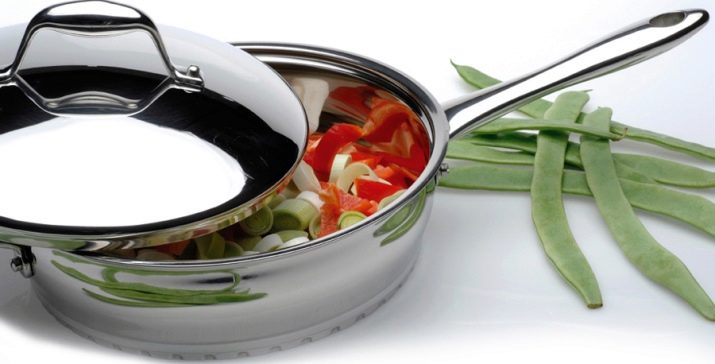
When choosing a product, professional chefs recommend paying attention to the following parameters:
- thickness of the metal base - walls 10 mm, bottom 30 mm;
- the presence of a multilayer bottom;
- lack of factory defects;
- permits confirming environmental safety;
- perfectly smooth inner and outer surfaces;
- correspondence of the diameter of the bottom to the size of the burner;
- the presence of a convenient and practical handle and cover;
- special protective layer that prevents stains from water and grease.
The choice of kitchen equipment is directly influenced by the type of stove used. For classic gas equipment, all types of utensils are suitable, for ceramic glass stoves, you need to choose products with a thick and flat bottom, but the induction device requires special kitchen utensils.
Experienced housewives recommend purchasing a whole set at once, which will include objects of different sizes, diameters, volumes and functional purposes.
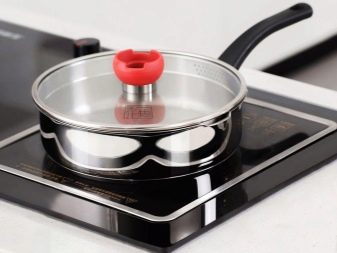
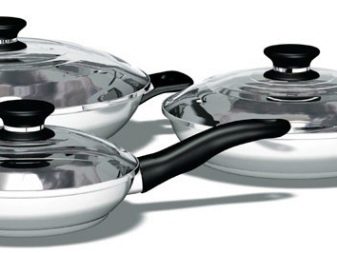
How to care?
To extend the period of operation of the purchased kitchen utensils, as well as to rationally use the family budget, you must not only choose the right pan, but also carefully study the rules for the care and storage of kitchen utensils.
Professional chefs recommend that you observe the two most important rules for operating containers:
- do not store cooked dishes in a pan;
- remove burnt foods only after soaking.
In order for the products not to stick to the new pan, it must be properly prepared for work. Stages of preparatory work:
- washing with detergents;
- filling the container with a small amount of vegetable oil;
- setting a frying pan on a stove with medium heat;
- gradual heating of the vegetable fluid until smoke is formed;
- shutdown of a plate;
- pouring cooled vegetable oil.
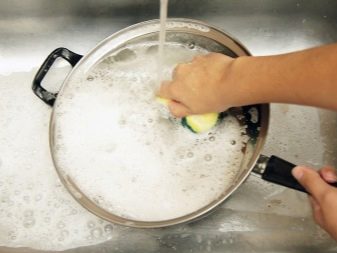
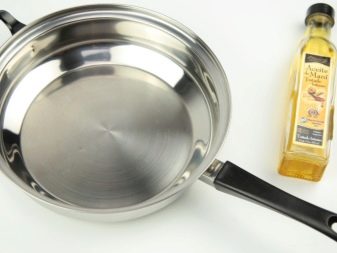
To remove residual liquid, gently wipe the product with a paper towel.
The main recommendations for the care of stainless steel utensils:
- wash containers only with soft brushes and sponges;
- refusal of aggressive and abrasive cleaners that contain chlorine, ammonia or acid;
- removal of complex contaminants with ordinary baking soda;
- to restore the shine, use a weak vinegar or lemon solution;
- sure to remove water droplets with a soft and dry cloth;
- use of the dishwasher only if there is no non-stick coating.
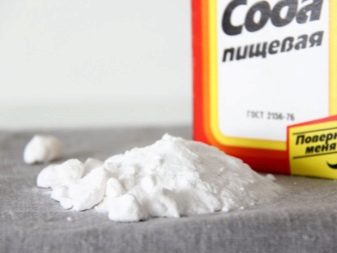

To preserve the long time of the gloss of the outer walls of the product and prevent scratches, experts recommend using only gel detergents for the external cleaning of the pan, and monthly lubrication of the clean inner surface with vegetable oil will create a non-stick protection.
You can extend the life of the pan by observing the following operating rules:
- pour oil only on a moderately heated surface;
- do not use a strong flame for cooking, which can provoke burning of products and their adhesion;
- to prevent food from sticking, before cooking it should be kept a little at room temperature or heated in a microwave;
- use only dried products, on the surface of which there is a minimum amount of moisture;
- to prevent the appearance of scale, add salt only after boiling.
Professional chefs do not recommend using this container for calcining salt due to the incompatibility of salt crystals and steel.
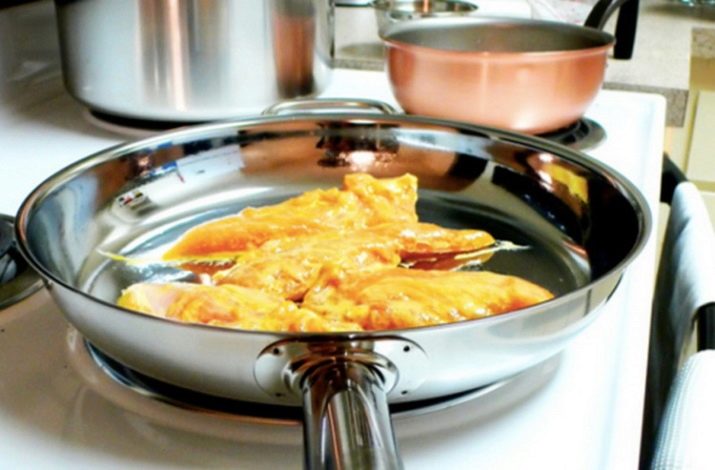
Non-observance of the rules of operation and care of the product can provoke burning of products. The causes of this problem:
- poor cleaning of the inner surface of soot and the remains of burnt food;
- non-compliance with operating rules;
- the use of wet and cold products.
To remove or turn over products is possible only after the formation of a golden crust on their surface. If the products are poorly behind the surface, then it is too early to remove them from the fire.
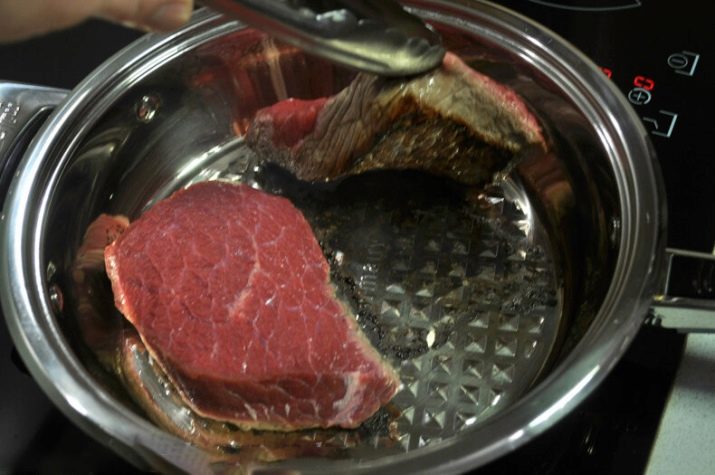
Reviews
Aesthetically attractive and environmentally friendly stainless steel kitchen utensils have found their application not only in the kitchens of simple housewives, but also in the workplace of professional chefs. The popularity and relevance of these products provoked the appearance of a huge number of both positive and negative reviews.
Experienced housewives celebrate durability of products and their resistance to mechanical damage, which significantly saves the family budget. Dishes prepared on stainless kitchen utensils preserve the initial taste and vitamin indicators as much as possible, and the small weight of the products allows housewives of different age ranges to use them. The universal properties of the container, which make it possible to cook on stoves of different types, cannot but please.
Along with the above indicators, catering workers are also attracted by high aesthetic indicators of products, which make it possible to create a strict, stylish and business atmosphere in the work area.
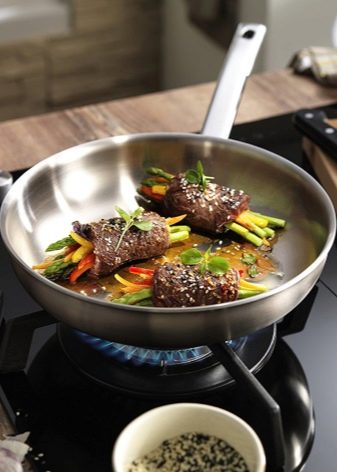
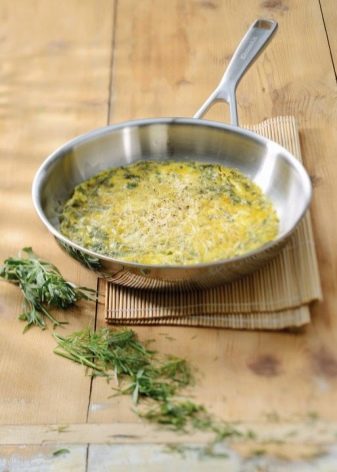
Loss of gloss and the appearance of scratches on the outside of the product are the main negative reviews of cooks. Only the acquisition of quality products and compliance with all the rules for the care of them and operation will avoid these troubles.
See how to properly prepare a stainless steel pan for use in the next video.
